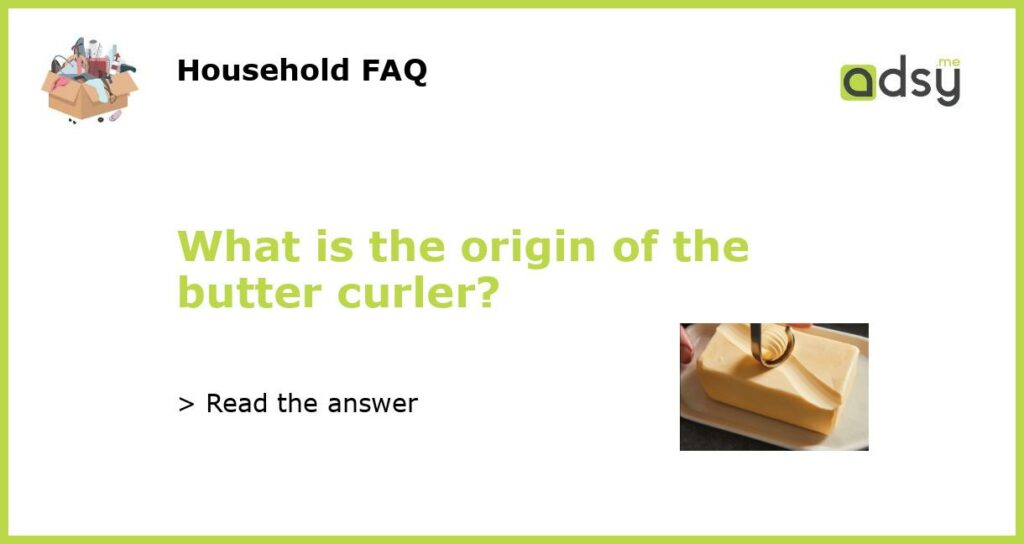The Invention of the Butter Curler
Butter curlers have become a typical tool used in kitchens worldwide, mainly in upscale restaurants and among home cooks. This kitchen gadget is designed to scrape thin shavings of butter from the surface of a butter slab, creating a curled piece of butter that can be used as an elegant garnish or a flavorful addition to a dish. So, when and where did this nifty kitchen tool come from?
The First Butter Curler
The first-ever butter curler was invented by Kai Strand, who worked as a chef and kitchen manager in the early 1900s. He invented the butter curler in 1928, which was initially designed for use in restaurants and ships. Back in those days, when meal service was a grand affair, restaurants went above and beyond to impress guests. Using a butter curler to sculpt butter into fancy shapes and serve them to guests became quite popular, and Strand’s invention rapidly gained popularity.
The Evolution of Butter Curlers
Over the years, many variations of the butter curler were created. Early versions were handheld devices that required a person to scrape the blade over the surface of the butter slab. Today, electric power butter curlers or battery-operated models are becoming increasingly popular, as they make the process of butter-curling much more efficient.
Butter Curlers in Modern Kitchens
In today’s modern kitchen, butter curlers serve not only an aesthetic purpose but also a functional one. They are typically used to create small curls of flavorful butter that can be added to entrees, side dishes, sauces, and even desserts. Professional chefs and home cooks alike have embraced the butter curler as a fun and practical kitchen gadget for their culinary creations.
In conclusion, Kai Strand’s invention of the butter curler has created an entirely new way of presenting butter in the culinary arts industry. Strand’s contribution to the culinary world is profound, and his invention continues to be the go-to tool for creative butter presentations worldwide.






